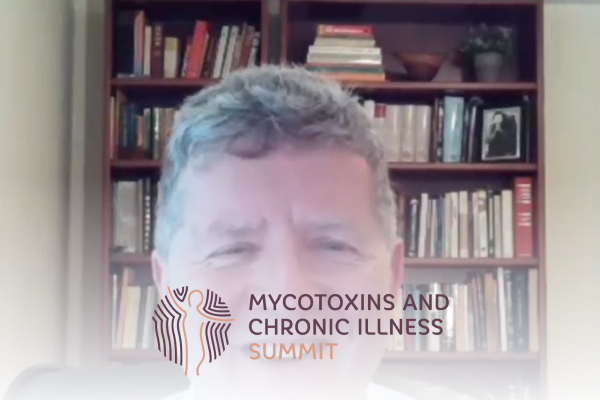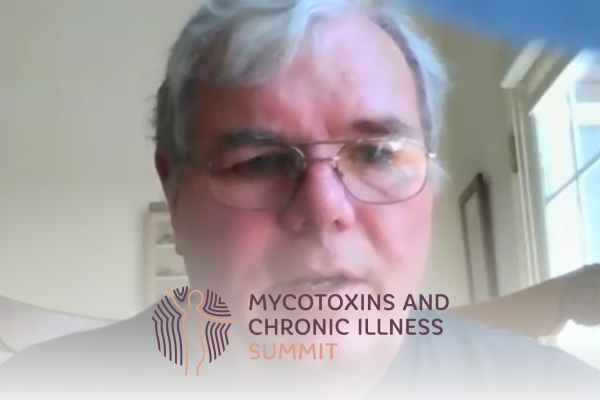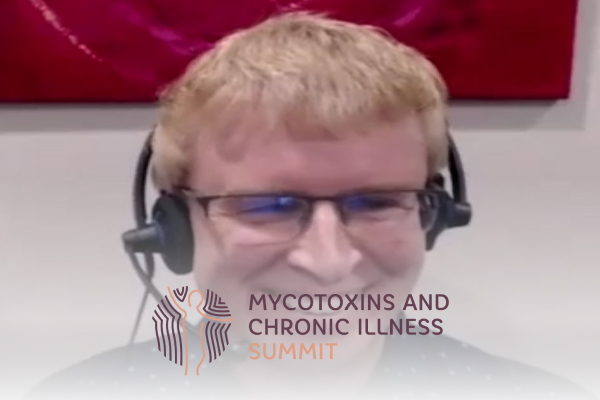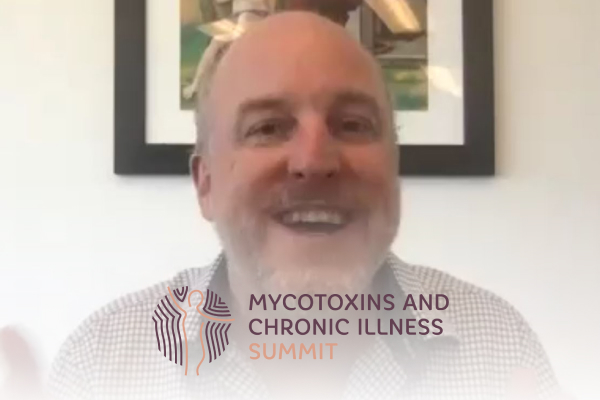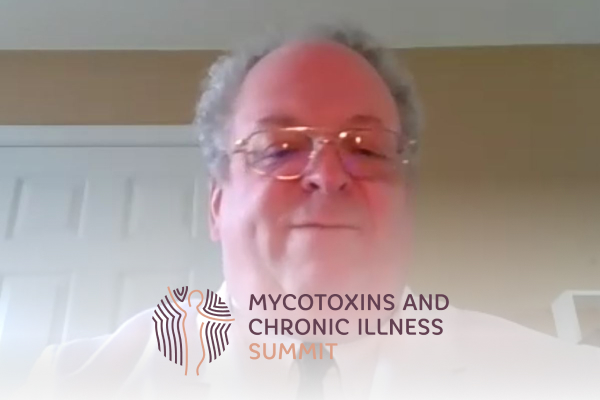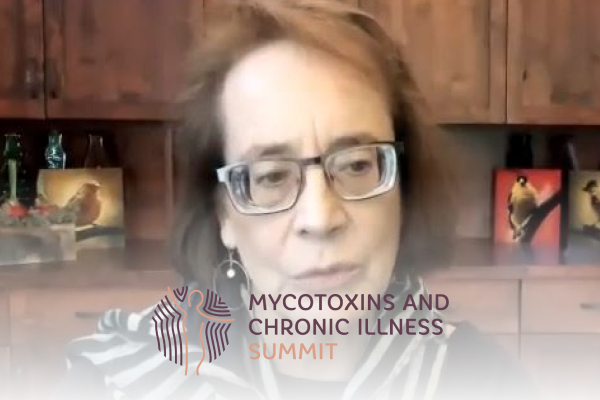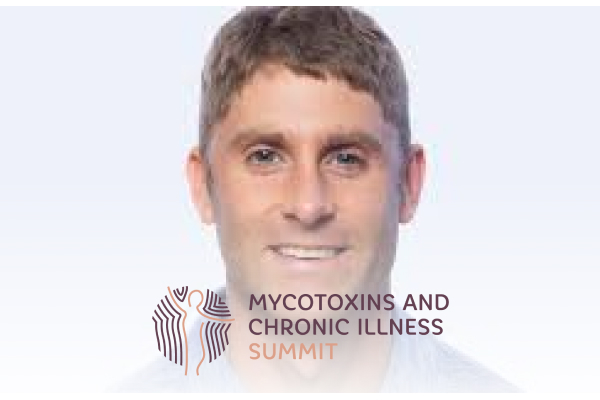Join the discussion below

Nafysa Parpia, ND has an independent practice at Gordon Medical associates, specializing in the treatment of Lyme disease and other complex chronic illnesses such as autoimmunity, mold toxicity, fibromyalgia, environmental toxicity and gastrointestinal disorders. Her patients with chronic Lyme Disease are typically those who either do not do well with antibiotics, or prefer... Read More
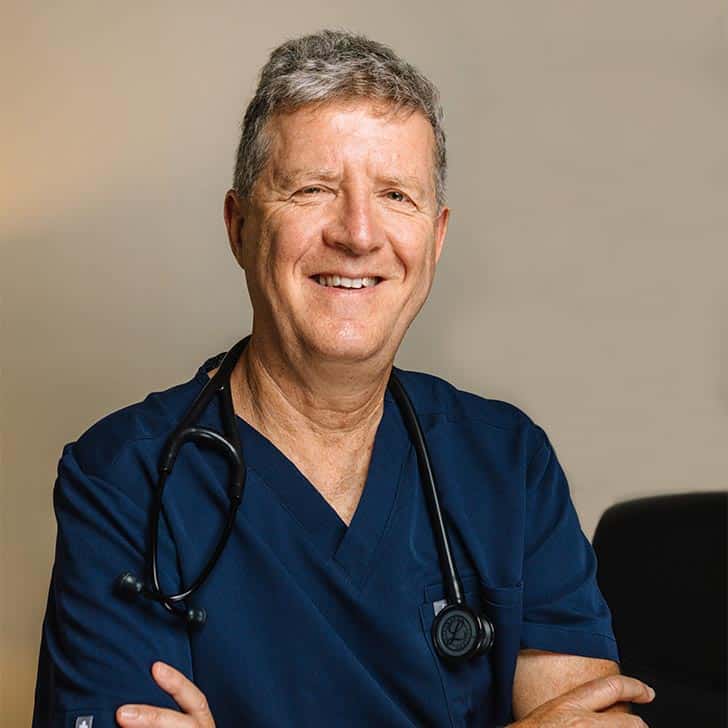
Isaac Eliaz, MD, MS, LAc has been a pioneer in the field of integrative medicine since the early 1980s, with a focus on cancer, immune health, detoxification and mind-body medicine. He is a respected formulator, clinician, researcher, author and educator, and a life-long student and practitioner of Buddhist meditation. With... Read More
- The survival of infections; the role of toxins
- The survival paradox
- Highlights of Modified Citrus Pectin
- The role of therapeutic apheresis
Related Topics
Ayurvedic Medicine, Bacteria, Biofilm, Chinese Medicine, Chronic Illness, Galectin-3, Harmonious Relationship, Holistic View, Infections, Lattice Formation, Microbiome, Mycotoxins, Parasites, Phlegm, Survival Protein, Survival Response, Susceptibility, Terrain, The Survival Paradox, Tibetan Medicine, Toxic Phlegm, Toxins, VirusesNafysa Parpia, N.D.
Today, I’m excited to interview Doctor Isaac Eliaz on our Mycotoxin Summit. Doctor Eliaz is an integrated medical doctor, licensed acupuncturist, researcher, author, product formulator, and frequent guest lecture. He’s been a pioneer in holistic medicine since the early 1980s with numerous, peer-reviewed publications demonstrating the benefits of his innovative formulations and protocols. Doctor Eliaz is founder and medical director of Amitabha Medical Clinic in Santa Rosa, California, a leading edge integrative health center, specializing in cancer, environmental illness, and other complex chronic conditions. Doctor Eliaz is regarded as a leading expert in galectin-3 and modified citrus pectin research, as well as a pioneer in the use of therapeutic apheresis blood filtration in the US. And I’m so honored to have Doctor Eliaz on this summit. He’s been a very important mentor to me in medicine. He’s literally influenced the way that I practice medicine today in a huge way. It is such an honor to have you here today, Doctor Eliaz. Thank you for joining.
Isaac Eliaz, MD, MS, LAc
It’s such a joy for me to talk to you and see where you are and where you’ve gotten and how much you’ve developed and how many people you help. It’s like, you know, your success I feel it’s like my success in some ways, So I feel proud.
Nafysa Parpia, N.D.
Thank you
Isaac Eliaz, MD, MS, LAc
Thank you
Nafysa Parpia, N.D.
You have changed the way I practice. I’m so grateful to you forever, thank you. So. So, Doctor Eliaz, tell us about mycotoxins and their metabolic effects.
Isaac Eliaz, MD, MS, LAc
You know, I mean, mycotoxin is a great area of specialty for you and there a lot of people who focus on mycotoxins. So I wanna look at mycotoxin in a little bit more of an holistic view, than just certain chemicals. So really mycotoxins are toxins that are produced by organisms, you know, they are actually mycotoxins. So when we want to look at them, when we look at them from the point of view of Chinese medicine, and we look at the patients. When we look at the environment where we find them, often lipid solubles, often in areas that are anaerobic. They really correlate very much with the concept of phlegm, toxic phlegm in Chinese medicine, or a weakness in ayurvedic medicine, and Tibetan medicine. And so, the mycotoxin, the people who are susceptible to mycotoxin often will also have this kind of constitution, a phlegmy constitution. Very organized, very methodical, and very sensitive.
People who are sensitive, who get influenced easily by outside influences. So when we look at a patient and we look at the mycotoxins, we always want to look at who is the host? What is the milieu? What is the terrain? Because if we, as you know very well, if we treat the terrain well, the person will heal. And so from the point of view of mycotoxins, because they are in areas that the body has less access to, they’re able to hide, they’re able to create a havoc often without us knowing until it’s too late.
They’re in area that are well enclosed, and they also have to hide the body from reaching to them and naturally they will shift the metabolism around them. We know for example, that fungus grows really well on sugar, you know? Right? We want it low, less . Because when you have M21 stimulated, when you have to much sugar, you shut down the normal metabolism of the mitochondria, M21 is blocked, PDK gets activated and Pyruvate dehydrogenase gets blocked. We get dysfunction of the mitochondrial system. So we see it in Lyme disease, Now that you see so much. We see it in mycotoxins, We see it in diabetes, the same M21, Metformin blocks it, you know, Honokiol blocks it and we see it in cancer. So you have a very similar terrain leading to different diseases and cross references between the different diseases based on the environment.
Nafysa Parpia, N.D.
I’m so excited to hear you talk about this, cause this is the piece of medicine, Dr Eliza, and nobody talks about, about how the terrain can influence and create different types of illnesses. So thank you for bringing this up, It’s such an important piece.
Isaac Eliaz, MD, MS, LAc
Yeah absolutely
Nafysa Parpia, N.D.
Yeah. Yeah
Isaac Eliaz, MD, MS, LAc
Definitely. And you know, as we talk a lot, we hold this we have this whole idea about the biofilm. You know? Talk about the biofilm. And so the biofilm, the microbiome creates it, in many level it’s a functional barrier, which relates to harmonious relationship between the micro bio, which is mostly in micro fungus, takes a big role in the microbiome, people disregard it. Parasites take a big role, viruses take a big role and end our body.
So because this area again, but it’s a barrier for our invaders. If we don’t live in a harmonized way with our guests, they will fight. That’s a fundamental issue. And let’s step back. Let’s look at our body, okay? And I want to explain this because from my perspective, instead of giving somebody fish, I wanna teach him how to fish. I wanna have a bigger understanding. It’s not such a good, the understanding is much bigger than this, and I’ll get to it. If we look at our body in a , we have 35 to 50 trillion cells, not million, not billion, trillion. You know how many reactions each cell has every second? Take a guess.
Nafysa Parpia, N.D.
How many? Thousands.
Isaac Eliaz, MD, MS, LAc
Close to a million reactions. So you got about, let’s say 50 trillion cells having a million reaction in the body. And each cell in many levels is for itself just like us. Just like we have our own identity with ourselves, Self identity. The cell identify. The cell is the membrane. It decides what it wants to get in, right? And what it wants to throw out.
Nafysa Parpia, N.D.
Yes
Isaac Eliaz, MD, MS, LAc
But it realizes that to survive, it has to live in harmony with the environment. And who tells the cell to live in harmony? Well, there’s one organ that functions differently in their bodies. There’s one organ in the body that instead of taking clean blood and letting go of toxic material like cells, organs do, the kidney doesn’t matter. The only organ that function different is the heart. The heart takes all the dirty blood from all over the body with open arms. Connect with the universe with the breathing. There is no oxygen in the mycotoxin environment. It’s toxic. And then the heart gives blood without discrimination.
Without discriminating, what do I mean? The aorta is stiff. You know, it cannot decide where the blood goes. It gives it everywhere. And who does the heart feed first? When it gives blood everywhere? It feeds itself through the coronary arteries. So the heart feed itself, is part of the whole. And the heart feeds itself in order to feed the whole. That’s why meditation that grates through the heart is so healing and we can do it quickly. So why am I telling you all of this? Because this amazing 50 trillion cells working together with the heart electromagnetic field, reaching every cell in our body, it’s big enough. We have the same relationship with our microbiome with hundred trillion organisms, with about 90% of our DNA material.
So when we treat them well, the biofilm become an exchange. We know that if you give antibiotics to a person going through chemotherapy or immunotherapy, the treatment will not work. We know that the healthy microbiome make chemotherapy and immunotherapy work better in cancer. It’s insane, the synchronicity. So in the same way, if we go to India, we go to the far east, people are full of parasites and fungus, and they live a healthy life, right? No symptom, why? Because there’s no aggressive identifications. So when we create a problem. The mycosis in this case and the parasites and the virus and bacteria, responds with what? With survival response.
Nafysa Parpia, N.D.
Yes.
Isaac Eliaz, MD, MS, LAc
So really the infections and toxins are often a result of the survival response. So this is wow. What do I mean? That’s really why I’m calling and finally, my book is finally out, should be out right now when this is airing, maybe next week or last week. It’s called the survival paradox.
Nafysa Parpia, N.D.
I’m very excited, it’s groundbreaking. It’s gonna turn, turn a lot of people’s heads to look in a new direction of thinking about medicine from complex chronic illness. I’m so excited to read your book and I’m so happy that you are providing our audience even before the book is out or justice is out with this, with your new insights, so thank you Isaac, for that.
Isaac Eliaz, MD, MS, LAc
I think it’s very relevant to this because I know the way that you work, right? We always say, you always say, let’s change the terrain. Let’s change the terrain and then people get better. So if we look at our survival, it’s worthwhile, then I’m gonna tie it into mycotoxin. We look at our survival, we wanna survive. So is the immediate survival that we do, if survival is so innate to us, it has to be automated. And it’s automated through the sympathetic system, through the system, right? We fight or flight.
Nafysa Parpia, N.D.
Right.
Isaac Eliaz, MD, MS, LAc
But the other process of survival is we create a barrier, we create a shield.
Nafysa Parpia, N.D.
Yes.
Isaac Eliaz, MD, MS, LAc
So this is done through the nervous system when we turn the sympathetic system on, and then we can relax with the parasympathetic and we’re okay.
Nafysa Parpia, N.D.
Yeah. I’ve heard you talk a lot about cancer as creating a shield as well as a tumor as a shield. So, it’s like.
Isaac Eliaz, MD, MS, LAc
Let me say. Now the metabolic process of creating survival, is led by a protein called galectin-3.
Nafysa Parpia, N.D.
Okay.
Isaac Eliaz, MD, MS, LAc
So galectin-3 is our survival protein, and it’s a carbohydrate galacturonic, carbohydrate binding protein. So galectin-3 is the backbone of the biofilm. So, you know, we talked about oxidized lipids and heavy metals and glycolipids and glycoproteins. They’re all sitting on galectin-3 structure that literally creates through Pentamers, it creates a lattice formation. It’s physically, this whole concept of biofilms, that’s actually what galectin-3 does.
Nafysa Parpia, N.D.
Okay. stop here for a second because I never hear anybody except for you talking about galectin-3. So people talk about biofilm, like you were saying, there’s the carbohydrate matrix, there’s DNA, there’s sugars in there. The galectin-3, I think is a piece that’s really, really, really important. And you’re bringing it up. Nobody else brings it up and that’s why I wanna sort of stop and put a spotlight here on the galectin-3 piece. So if you can just go on about that, I want our listeners ears to perk up because this is information that I’m considering pretty new.
Isaac Eliaz, MD, MS, LAc
Yes. It’s interesting. And so galectin-3 is new to many people, yet there are 9,000 peer review publication and on a somebody with the blocks galectin-3. We just published our 70th seven zero paper. You know, multiple centers. So it’s slowly coming into the awareness, but you’re right, it’s new to most people. So galectin-3 because the survival protein inside our cell, in the embryonic stage, it helps embryogenesis. For example, it helps the kidneys to develop normally. But later on in life, especially of the membrane and outside the cell, it protects us. And how do we protect? Through hiding and through fighting. So it creates the inflammatory response. Everybody knows about the cytokine storm. I mean most people know because of the COVID.
Nafysa Parpia, N.D.
Right.
Isaac Eliaz, MD, MS, LAc
Cytokine storm again, is the center of my work for decades.
Nafysa Parpia, N.D.
Right
Isaac Eliaz, MD, MS, LAc
The molecule that starts at the top, that started the cytokine storm is galectin-3. For example, I just published a paper with multiple authors, including you know, the number one ranked sepsis and acute kidney injury expert in the world.
Nafysa Parpia, N.D.
Great. love to make your papers available to the viewers here. So if you can send me those after most of the viewers.
Isaac Eliaz, MD, MS, LAc
So in this paper it was just published in critical care medicine, which is one of the best critical care journals. We showed that when a patient comes to the ICU with sepsis and they have no kidney damage, no pre-existing condition. Just like somebody who just got COVID, similarly out of the blue. The ones with elevated galectin-3, at time of admissions will be the ones who later on will develop acute kidney injury and will die. But more than this, when we blocked galectin-3 in an animal model, you could call it translational model. It is very reliable for sepsis and .
When we blocked the galectin-3 before creating the sepsis, we dramatically reduced mortality, kidney damage and the spike in interleukin 6. So galectin-3 spikes within minutes and interleukin 6, interleukin-1β, all the rest, alpha, they come much later. Now these are the nasty inflammatory component that are creating our trouble with mycotoxins with a brain fog, with all the dysfunction in the body. So it starts with galectin-3. And that’s why addressing galectin-3 is so important, not only for using modified , but through trying to shift ourselves from a survival mode to a harmonious mode. Because you know, these things are more than just a chemical, you know, I know, not everybody knows, but that’s what we were talking. It’s a bigger effect.
Nafysa Parpia, N.D.
Right. So, Isaac, I’m starting to think, if you don’t mind, I want to take a little detour, okay? We’re here to talk about mycotoxins, and I’m gonna be picking your brain about that. But I am starting to think about COVID 19 as you’re talking about galectin-3 and as you’re talking about the inflammatory cytokines. If you don’t mind, would you explain this? Because my mind is there right now, just take a little detour, I would appreciate that. Thank you
Isaac Eliaz, MD, MS, LAc
You know, I brought the idea of the survival response, the survival paradox. And we assume that we want to survive, right?
Nafysa Parpia, N.D.
Right.
Isaac Eliaz, MD, MS, LAc
You Know it. But guess what? Why does the bacteria or the fungus, or the virus behave aggressively? They also want to survive.
Nafysa Parpia, N.D.
Right
Isaac Eliaz, MD, MS, LAc
We look at the spiking protein, the same protein that all the vaccines are going after. And this is published literature, the first one came like in July, August of 2020. It is practically identical to galectin-3, it’s mind blowing. The virus just like we want to survive, the virus want to survive, what does it protect itself with? With galectin-3. And we know now that patients with galectin-3 and COVID will tend to have more acute kidney injury, you know, about 40% of hospitalized COVID patients have acute kidney injury, 50% of them will die. And more than this was a very large paper that was published. the last author is somebody I published some papers when she was in Harvard and I got her into galectin-3, six years ago and now she’s a well-known researcher.
So they published a paper in them from the largest hospital in Mexico city, of COVID patients in the hospital. And regardless of the level of damage to the lungs, the level of galectin-3 at time of hospitalization, determine who will get sicker and who will die. Why? Because of the cytokine storm. And this ties to something that, you know we talk a lot about. The immune system is not about just responding. You don’t want to over respond. You want to respond in a harmonious way. Like, eh, you know respond and then let everything dissipate with no remanence. So what galectin-3 does, it turns on the alarm and the alarm never turns off. And the people don’t die from the virus. They die from the response of the inflammation.
Nafysa Parpia, N.D.
And this is a part of the cell danger response actually.
Isaac Eliaz, MD, MS, LAc
Totally.
Nafysa Parpia, N.D.
Right?
Isaac Eliaz, MD, MS, LAc
Very similar in a little bit, yeah, a little bit later on, but yeah, it’s exactly. So the cell danger response. There’s an organ danger response, there’s a person danger response, there is a society danger response.
Nafysa Parpia, N.D.
Right.
Isaac Eliaz, MD, MS, LAc
Which we experienced in 2020, right? With division and fighting. It’s all the same. It’s a macro cosmos and us and every cell in our body, it all contains the same principle, the same wisdom.
Nafysa Parpia, N.D.
Yes. This is one of the things I love most about you and the way you practice medicine Isaac, is that you really, you’re very biochemical, you’re very much a scientist, very much a doctor and at the same time a philosopher and you bring in spirit and medicine and I think that’s beautiful and powerful.
Isaac Eliaz, MD, MS, LAc
Thank you. And so, you know, so for example, if you look at mold, at mycotoxin and you look at binders, one of the reasons why when you use modified citrus pectin you don’t get the aggravation, you just don’t. And you know it from your patient, is because we are addressing galectin-3. So yeah modified citrus pectin has a great affinity for heavy metals, well-published. Lead, mercury, even uranium and caesium, radioactive materials. But in the same time, because it blocks galectin-3, it reduces excessive inflammatory response, which is what causes all the side effects. And this is why it has such power and it can be integrated with any protocol. And of course, as you know I use a lot of things, you use a lot of things. And then of course we have some more dramatic method, which is my unique specialty in the last six, seven years, which is therapeutic apheresis, which is, yeah.
Nafysa Parpia, N.D.
So.
Isaac Eliaz, MD, MS, LAc
But it’s along the same lines.
Nafysa Parpia, N.D.
Yeah. So I definitely wanna talk to you more about apheresis on this interview. I wanna stop and talk a little bit more about pectasol because I don’t have one patient who’s not on pectasol. And you know, how many patients I have. Many, many, many patients, everybody is on pectasol and I noticed that it’s a very different binder than the other binders. And most of my patients will notice an effect right away, within one week of using the pectasol, they’re gonna feel less inflamed. They actually start to feel better in their system. Sometimes it takes a couple months, but usually it’s at least within one month they noticed the difference and they love it. And then they ask me, why is this different than other binders? Why do you focus on this binder more than you do on charcoal? So if you could speak, speak to that. Answer that for my patients please.
Isaac Eliaz, MD, MS, LAc
Yeah because really, modified Pectin in general and modified citrus pectin, which is fundamentally different. And, it’s close to my heart because I developed pectasol over 70 published papers and because I wanna make sure that if people are using modified citrus pectin they use a product that is reliable because it’s a generic name. Modified citrus pectin is an effective galectin-3 blocker. So it blocks the damaging effect of galectin-3. So for example, I just mentioned the paper about the results in sepsis. Right? But then we just submitted a multicenter trial about the effect of our modified citrus pectin in recurrent prostate cancer, biochemical recurrence, which is the prostate cancer is being removed and now it’s starting to come back.
Nafysa Parpia, N.D.
Yes.
Isaac Eliaz, MD, MS, LAc
And what we are allowing is the body to fight it by blocking galectin-3, cause galectin-3 shuts down our immune response, and we got close to 80% response. It’s gonna go into . So how does it do it? Because when you’re using it as a binder, because it has an affinity to positively charged ions. So heavy metal. Heavy metal loves to be in an environment of oxidized lipids. So heavy metals and toxins that are positively charged. In the same time it reduces the inflammatory response, it prevents a fibrotic response, you know. MCP prevents inflammation and fibrosis, and it regulates the immune response. So you will get a normal immune response and you’ll get, you don’t get hyper inflammation, you don’t get abnormal inflammation. And you know, we’ve been taught, you know, you and I have seen this a lot. You’ll get a line patient with mycotoxins and you look in the the protein is non-existent, say wow, it’s so good. Well, when we look at TGF-beta, the fibrotic it skyrocket.
Nafysa Parpia, N.D.
Exactly
Isaac Eliaz, MD, MS, LAc
Right? And the galectin-3 is abnormally low, it’s like five. Abnormally low because your system is not responding well. You give the modified citrus pectin, you break the shield, suddenly CRP comes from non-existent to 0.3, 0.4. TGF-beta goes down from 15, 20,000 to 5,000. You’ve got a normal immune response.
Nafysa Parpia, N.D.
Right.
Isaac Eliaz, MD, MS, LAc
Or this immune regulation is so important. We know when you take T-cells and you put galectin-3 in the environment, you shut down the cytokines completely. In fact the most expensive and promising anti-cancer drugs, the PD-L1 inhibitors, they do not work when galectin three level is high in the patient. It’s known, it’s published. If galectin-3 works, is higher than a certain level. PD-L1 inhibitors don’t work in lung cancer. Why? They shut down the immune response, Why does they do it? The cell, the cancer cell wants to survive, it is using galectin-3 to evade the immune system. Remember the survival concept is not only ours, it’s the fungus also wants to survive, the cancer cell also wants to survive. So we always have to move between attacking, between cleaning and between harmonizing. And it’s a dance, you know just like, remember when we did some craniosacral on some patients, you feel and you just let, you let the work happen on its own, you know?
Nafysa Parpia, N.D.
Yeah
Isaac Eliaz, MD, MS, LAc
Magic of healing, right?
Nafysa Parpia, N.D.
Yes, exactly. I wanna talk to you about mycotoxins and how they affect the different systems of the body. They cause inflammation everywhere as you know, they hijack the whole system and I want you to tell us about MCP and how it affects inflammation positively and all the different systems of the body.
Isaac Eliaz, MD, MS, LAc
Right. So it’s interesting because modified citrus pectin was initially in 1995, the landmark paper with Doctor who I just published a paper on MCP with was on cancer. And when we started using modified citrus pectin, giving to patients, we saw this comment that we didn’t know initially. My joint pain is going away, my memory’s better. I think clearly, you know?
Nafysa Parpia, N.D.
Right.
Isaac Eliaz, MD, MS, LAc
And then we realized, wow. Then I realized very quickly, my blood pressure is normalized. I realized, wow. It harmonizes inflammatory response. So MCP is very important for narrow inflammation, we’ve published a number of papers. I mean and other researchers who researched it, showing that galectin-3 drives narrow inflammation, the same principle like we have with macrophage in our body, driven by galectin-3 happen with Glia and astrocytes in the brain. They become inflamed. And when you give them modified citrus pectin you reverse the process of narrow inflammation. And also remember it’s pulling out the heavy metals.
Nafysa Parpia, N.D.
Right. Right. And so our patients with mycotoxin illness, they have a lot of neuroinflammation.
Isaac Eliaz, MD, MS, LAc
Absolutely.
Nafysa Parpia, N.D.
Significant, significant. And so when we give them the monocyte, the modified citrus pectin, it’s actually helping to work on the neurological system, to bring the inflammation down, block the galectin-3. That’s very, very exciting.
Isaac Eliaz, MD, MS, LAc
Yeah, as you know, you know, in the in-clinic treatment with phosphatidylcholine, you know, in glutathione, you know changing the environment of the membranes. And again, a lot of these toxic lipids are sitting on the biofilm. So when you do this and you get modified citrus pectin it will work better. So it’s really an enhancer, it’s a standalone. But it really enhances practically almost every treatment because it allows the body to address the issue. We have to remember that the areas of problems in our body, regardless of what they are, once they’re usually inflamed. And two, the body has less control of them, because something is going wrong. So galectin-3 is always involved. If you look at chronic kidney disease, you look at Nash and you know, and liver disease, you look at pulmonary fibrosis. If you look at heart failure, if you look at cancer, if you look at autoimmunity, or you look at sepsis, AKI, all of them, galectin-3 is elevated, compared to control. And we think the disease, the higher galectin-3, the sicker the person is. So addressing galectin-3 is key, and we live in a society of survival, you know because of the speed of life. We live in an inflamed society, right?
Nafysa Parpia, N.D.
We sure do.
Isaac Eliaz, MD, MS, LAc
Yeah, so it’s part of the whole picture.
Nafysa Parpia, N.D.
Yeah.
Isaac Eliaz, MD, MS, LAc
Definitely
Nafysa Parpia, N.D.
Yeah. So I’ve seen a lot of patients at your clinic undergo apheresis, and I’ve seen it help a lot of people. I’ve seen it help the people that nothing else helps as well. So can you talk to us about apheresis in general? I wanna hear about your patent because I know that you’re apheresis is different and I think it’s more powerful than the other apheresis I’ve seen around. And then finally, I’d also like you to tell us if you’re open for patients to come in, who need apheresis to your clinic as well. So.
Isaac Eliaz, MD, MS, LAc
So therapeutic apheresis has really become my focus, I’ve simplified my life, no longer many doctors and many nurses. And then focusing on therapeutic apheresis and I treat people one-on-one. I treat everybody myself now. And so it’s very different, it’s fewer people with a lot of focus. So therapeutic apheresis is similar to dialysis, but different. So it’s a high-tech treatment, you pull out the blood, you know, it’s using FDA approved system and you pull out the blood, you separate the cells from the plasma and you run the plasma through a filter. And the filter has affinity to oxidize lipids.
So just oxidize it will not pull HDL, it will pull LDL, it will pull out oxidized Lipids, It will pull out lipoprotein , which is nasty. Lipoprotein is almost a pre-existing condition from mycotoxins to work because no oxygen is coming into the tissue. It will pull C-reactive protein and it will pull out all the excessive growth factors and cytokines, that are causing the inflammatory damage. So this is in general, this approach unrelated in research, and developing a column for galectin-3 that they hope to get an approval for sepsis in the hospitals, that’s a project I’m working on .
Nafysa Parpia, N.D.
This would be helpful to all kinds of illnesses that are sort of post infective, I would say so. Once the infection has hit the person, it might not have replicative viruses or bacteria or mold anymore, but the inflammation is still in the system. We’ve killed the bug, but now the person is still inflamed. We do all kinds of detox, still not working. So.
Isaac Eliaz, MD, MS, LAc
Yeah. But actually it pulls mold and mycotoxin in the way that nothing does.
Nafysa Parpia, N.D.
Great
Isaac Eliaz, MD, MS, LAc
Why? Because you don’t need the body to do it. The person sits and we run more than one plasma volume. while we do this, I run specialized custom made IVs, that makes the cell release the mycotoxins and all the oxidized, heavy metals and other inflammatory compounds.
Nafysa Parpia, N.D.
Yes.
Isaac Eliaz, MD, MS, LAc
And we collect, the machine collect them. So that in different times in the process, I give different IVs and at the end, once the person is obviously a machine, we’ll give them just IVs to help them out. Like, you know, based on what they need. So in many , what apheresis does, you cannot get, you can give good from here to the end of the world. For certain people is great, but for some people, it just will not do the treatment.
Nafysa Parpia, N.D.
So you’re saying that the person can be in the middle of infection and it’s still gonna be effective?
Isaac Eliaz, MD, MS, LAc
Of course
Nafysa Parpia, N.D.
Once the infection has been killed, it’s still effective, so you can give apheresis throughout.
Isaac Eliaz, MD, MS, LAc
Absolutely. Especially, for example, if you’re giving somebody antibiotic therapy and they’re producing a lot of by-products, yeah definitely. It’s very effective around cancer of course, you know, and chemotherapy, immunotherapy.
Nafysa Parpia, N.D.
Right.
Isaac Eliaz, MD, MS, LAc
We also pull out about 30% of galectin-3. So we pull out fibrinogen. So the person becomes less hyperviscous, less inflamed, and then they can respond to the other treatment. And then I think, if you are treating the person outside their body. So there are practically no side effects.
Nafysa Parpia, N.D.
Right. So, you know Isaac, patients have traveled to Germany to go get apheresis. Americans have traveled to Germany.
Isaac Eliaz, MD, MS, LAc
I know.
Nafysa Parpia, N.D.
I’m sure they had a great experience you know, but I think that they could come closer to home now for apheresis. They don’t need to go to Germany, if you’re accepting patients.
Isaac Eliaz, MD, MS, LAc
Of course. And also I visited the German place and maybe now their device is different, but it’s a size exclusion.
Nafysa Parpia, N.D.
Uh huh
Isaac Eliaz, MD, MS, LAc
So it pulls out a lot of stuff, but it also pulls out proteins.
Nafysa Parpia, N.D.
Right.
Isaac Eliaz, MD, MS, LAc
So the patient is exhausted.
Nafysa Parpia, N.D.
Yes
Isaac Eliaz, MD, MS, LAc
And here the rule of some for most people, unless rarely not, but I would say well over 90% of the people, they feel better after the apheresis, they don’t feel wiped out. And then of course we do translate context. So I collaborate with a lot of doctors, where they do the caring, I just focus on the apheresis and what’s around it and if they want, then I can kind of, you know, zoom in the way we talked and find, there’s always a story. It’s mind blowing the story behind the patient. And if you find this story, everything will . There’s always a story, just let the patient tell you the story and she or he will tell it to you. So that’s really the art of it, is just listening and letting the story surface, you know?
Nafysa Parpia, N.D.
Yes. Absolutely. Well, thank you Isaac. What a great . And if you have any resources you’d like to share with the audience, you can email them to me, cause I know they’re gonna wanna hear more about apheresis and I know they’re gonna wanna see your research.
Isaac Eliaz, MD, MS, LAc
Then also, the survival paradox is gonna be out, hopefully out right now.
Nafysa Parpia, N.D.
Very exciting.
Isaac Eliaz, MD, MS, LAc
It will be available on Amazon. Thank you so much.
Nafysa Parpia, N.D.
Thank you so much.
Isaac Eliaz, MD, MS, LAc
Thank you for having me, bye.
Nafysa Parpia, N.D.
Thank you for being here. Bye for now.
Downloads

